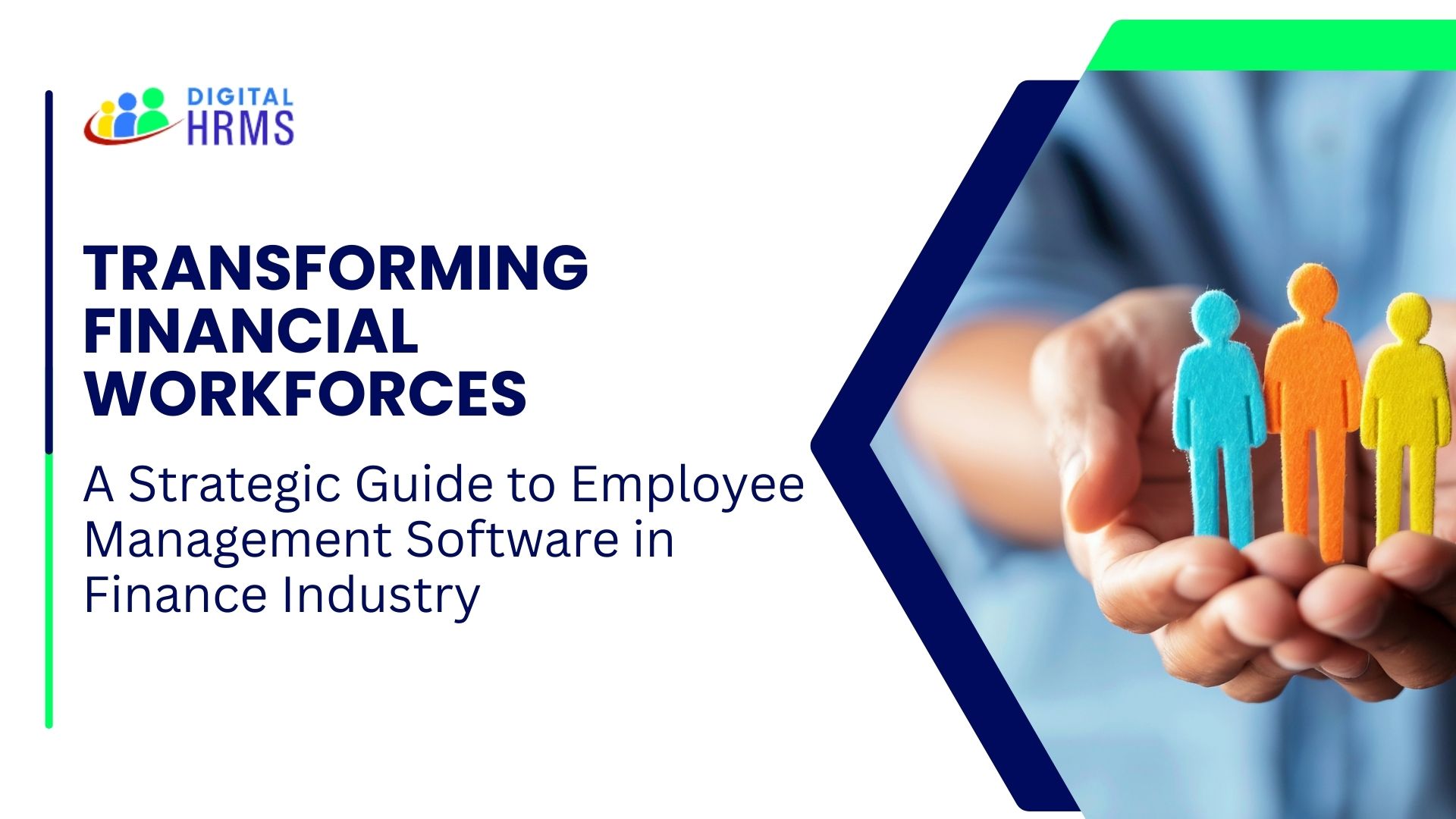Improving Workforce Efficiency: A Strategic Approach to Employee Management Software in the Finance Industry

The Need for Strategic Workforce Efficiency in Finance
In the finance world—where accuracy, compliance, and quick responses are crucial—your workforce isn’t just a line item on the budget; it’s the powerhouse that keeps the business running and growing. Yet, with ever-changing regulations, high turnover rates, and the constant push to scale operations quickly, managing employees effectively has turned into quite the challenge. This is why investing strategically in employee management systems is no longer optional; it’s essential.

The Role of Employee Management in Organizational Performance
An effective employee management system goes beyond simply tracking time off or payroll. It covers every stage of the employee journey—from hiring to departure—directly impacting how well the organization performs. In finance, where deadlines are tight and mistakes can be expensive, having smooth HR operations is key to not just bringing in talent but also keeping, developing, and optimizing it.
Challenges in Workforce Management within the Finance Sector
The finance industry is under constant scrutiny, with regulations changing all the time. This unpredictability can make traditional HR methods feel outdated. Relying on manual processes can create data silos, compliance issues, and slow onboarding. Plus, not having clear visibility into workforce data can make decision-making tough, affecting how quickly you can adapt to market changes or internal talent demands.
Modern HR Software: A Paradigm Shift in Employee Management
Today’s HR software solutions are revolutionizing employee management through smart automation, data analytics, and centralized operations. These platforms are built not just for HR teams but also to empower leaders with real-time insights and measurable HR results. A well-designed HR platform shifts workforce management from a reactive task to a strategic advantage.
Employee Onboarding and Induction: Laying the Groundwork for Success
The Significance of a Smooth Onboarding Experience
The onboarding process is where an employee's first impression of a company is formed. If this process is disjointed, it can lead to confusion, delays, and a sense of dissatisfaction—especially in the fast-paced world of finance. A well-organized onboarding experience helps new hires feel ready and welcomed, allowing them to jump in and make an impact from day one.

Streamlining Induction with Digital HRMS Tools
Digital HRMS takes the onboarding experience to the next level. With features like automated document collection and the ability to assign induction sessions and checklists, every aspect is digitized for ease. HR teams can create tailored induction plans for specific roles, ensuring that new employees get the exact information they need. This not only shortens the onboarding timeline but also boosts engagement and accelerates productivity.
Key Features of the Digital HRMS Employee Management Module
Centralized Employee Information
Digital HRMS serves as a single source of truth for all employee data, making it easily accessible while keeping it secure. From personal information and qualifications to documents and job history, everything is stored in one place—eliminating duplicate data entry and minimizing human error. This centralization is vital for maintaining consistency, especially during audits and financial reporting.
Managing Employee Lifecycle and Compliance
From hiring to promotions, transfers, and exits, the employee management system in Digital HRMS ensures that every lifecycle event is documented, traceable, and compliant with the regulations of the finance sector. It also features automated alerts for compliance renewals, document expirations, and policy updates.
Custom Role Mapping and Hierarchies
In the finance sector, approval processes can be complex. Digital HRMS enables organizations to create custom roles and hierarchies that accurately reflect their reporting structures. This ensures that workflows, such as leave approvals or policy escalations, align with the organizational framework and uphold governance.
Driving Efficiency through Integrated HR Processes
Real-time Insights for Better Decision-Making
With dashboards and analytics woven into the employee management module, Digital HRMS gives HR leaders a clear view of workforce trends in real time. Whether it’s attrition rates, skill gaps, or onboarding delays, everything is laid out visually for quick action. These insights enable the finance sector to adapt and allocate resources smartly.
Workflow Automation and Reduced Redundancy
Redundant HR processes—like repeated approvals, duplicate data entry, or scattered communication—can waste time and create frustration. Digital HRMS tackles these issues by automating workflows, sending reminders, and utilizing e-signatures. This makes HR operations leaner, quicker, and more consistent.
Impact on Finance Organizations: Realizing Measurable Gains
Finance companies that have adopted Digital HRMS are seeing faster onboarding cycles, improved compliance scores, and greater employee satisfaction. The system’s seamless integration with payroll, performance, and leave management modules ensures smooth operations—without data loss or bottlenecks. Most importantly, strategic HR operations now align with broader business goals, paving the way for long-term profitability.
Conclusion: Embracing the Future with Digital HRMS
In the finance industry, workforce efficiency is no longer just a luxury—it’s a necessity for staying competitive. Digital HRMS equips finance enterprises with a powerful, agile, and intelligent employee management system that adapts to their evolving needs. From onboarding to retirement, every interaction is enhanced, and every process is optimized. With Digital HRMS, finance organizations can cultivate not just a compliant workforce, but a truly high-performing one.